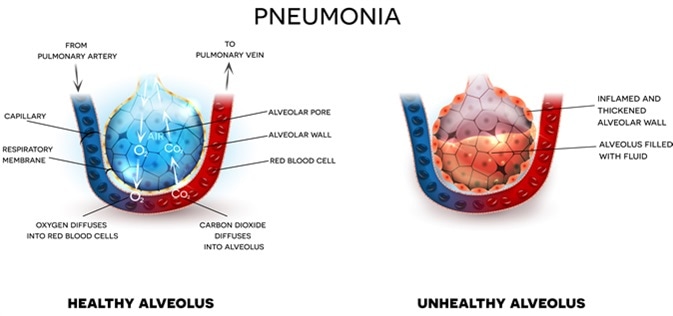Launching 1st March 2023. Also check out: https://www.thailandmedical.news/
Pneumonia is an inflammation of the lung tissue caused by an infection. This may be a bacterial or viral infection. Walking pneumonia is a milder version of the disorder caused by Mycoplasma pneumoniae, and sometimes Chlamydia or Legionella. This is a bacterial infection that can affect children and adults.
There is no seasonal prevalence, and cases of walking pneumonia may be seen throughout the year. Sporadic community outbreaks may occur during late summer and fall. Symptoms occur about fifteen to twenty days after exposure to the infected person.

Since the symptoms of walking pneumonia are mild, the affected individuals may not realize that they have contracted a respiratory disease. However, when the symptoms are prolonged beyond two weeks, they should be brought to the attention of a health care provider. The following methods of diagnosis would then be followed.
1. Clinical Examination:
The patient will be examined by the health care provider, who will look for any abnormal symptoms and listen for abnormal lung sounds associated with pneumonia, using the stethoscope. He will ask about other family members displaying similar symptoms.
2. Chest X-Ray:
The doctor will order a CT scan of the chest region in order to check for infection in the lungs. This is the standard procedure to diagnose all kinds of pneumonia.
3. Swab Tests:
The respiratory secretions from the nose and mouth will be collected using swabs to be tested for the source of bacterial infection. Bacterial cultures will be done in order to determine the best antibiotics to use against the infection. The patient will be asked to cough or sneeze into a special container for the sample to be collected.
4. Bronchoscopy:
This is a specialized test that may be performed to directly view the airways and diagnose some types of lung disease. This is done in rare cases where the symptoms are puzzling. It involves using a bronchoscope that is passed through the mouth or nose into the trachea and further down to the lungs. A mild anaesthetic will be sprayed into the mouth and throat region before the scope is inserted. Small samples of lung tissue or sputum may be collected from the lungs during the process.
5. Measurement of Arterial Blood Gases:
This allows the doctor to measure how much oxygen and carbon dioxide are present in the blood, It also allows the pH of the blood to be tested. Blood will be collected from the radial artery, femoral artery, or brachial artery for the test.
Like most bacterial infections, walking pneumonia caused by the bacteria Mycoplasma pneumoniae is also contagious. It is spread by contact with the droplets which may be spread through a cough or a sneeze. The phlegm coughed up by the infected person is also a source of infection. These tiny droplets may be inhaled by someone nearby.
When these patients touch objects after touching their nose or mouth, the bacteria may be transferred to the objects, or fomites. The next person who handles the objects will then be likely to pick up the infection. The transmission of this bacterial infection needs long-term close contact with the patient. That is why crowded places and schools are likely to be hotbeds of infection.
Antibiotics are usually prescribed. These may include erythromycin, clarithromycin, ciprofloxacin, levofloxacin, doxycycline, tetracycline or azithromycin. The symptoms of walking pneumonia may be so mild that antibiotics may not be required to treat them.
Some strains of Mycoplasma pneumoniae tend to be resistant to macrolide antibiotics. Antibiotics reduce the recovery period. Although complete recovery may take a couple of months more. In case the patient develops Legionnaires disease, hospitalization will be required.
Each case is treated on the basis of the severity of the symptoms. Milder attacks may subside without medication, while severe cases may require constant monitoring as well as hospitalization of the patient.
A pneumonia vaccine is the ideal way to prevent getting infected. However, if someone around you has contracted walking pneumonia, other measures need to be taken. It is possible to curtail the spread of walking pneumonia to other members of the group by maintaining a high level of personal hygiene for the patient.